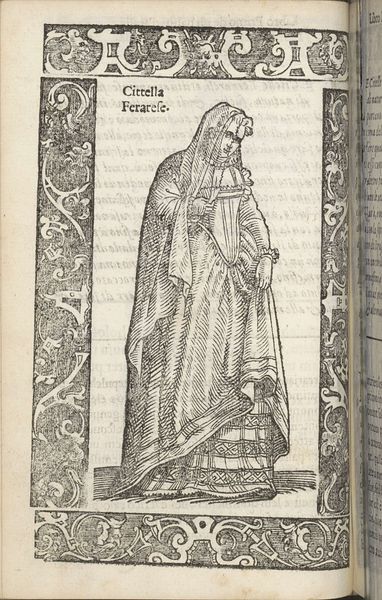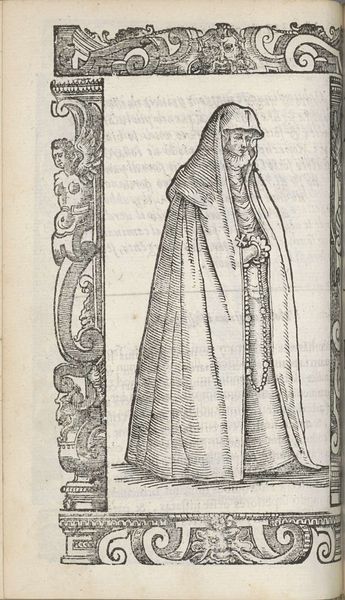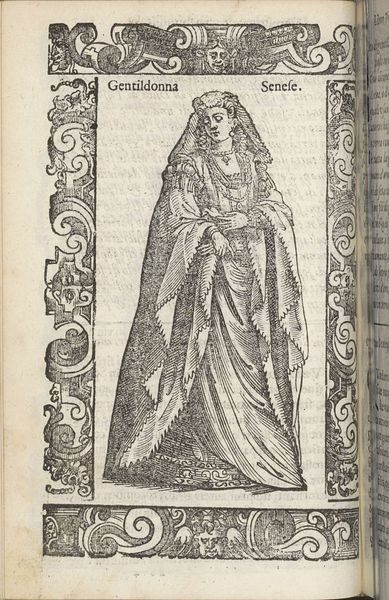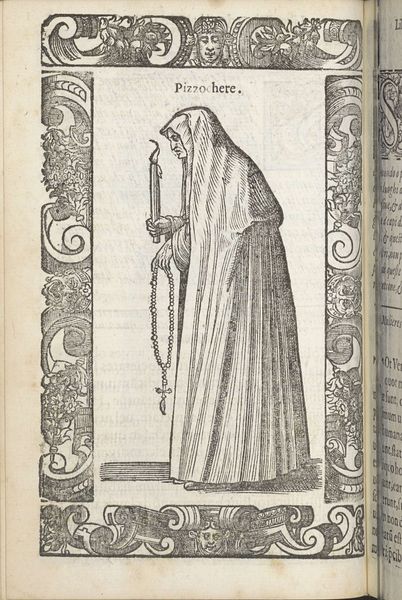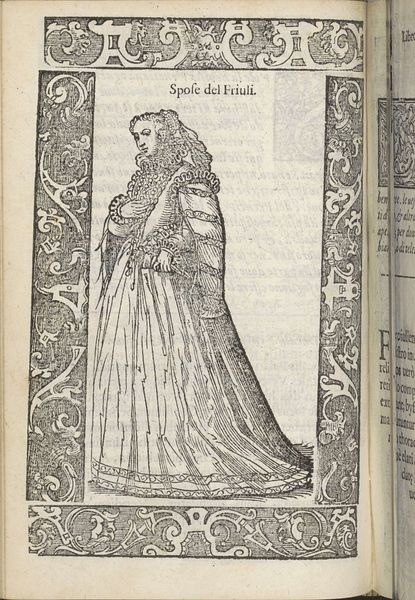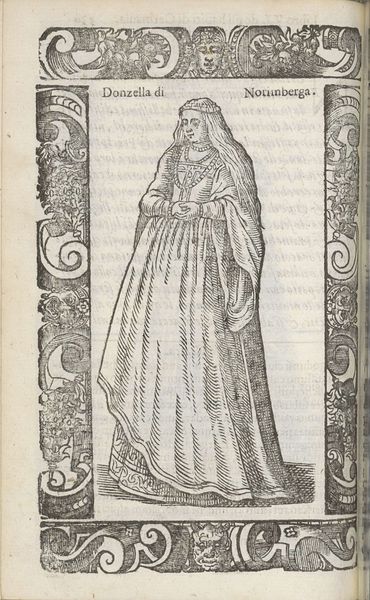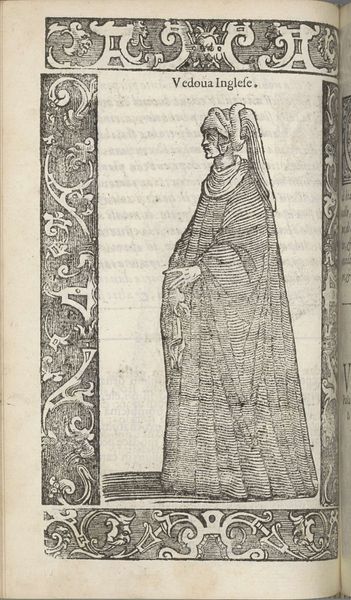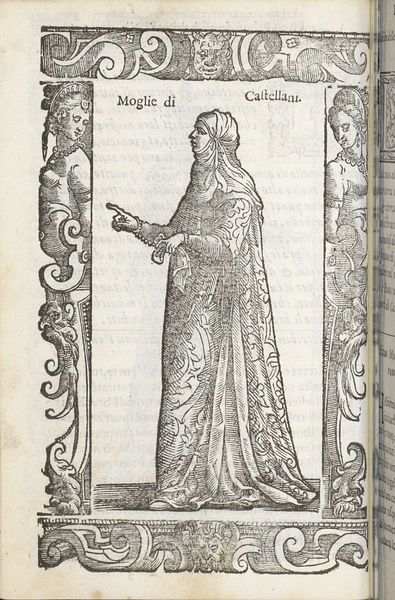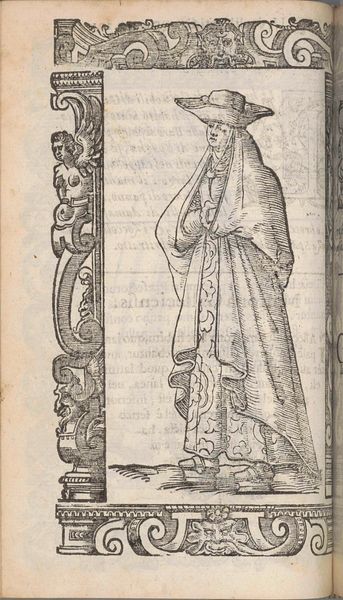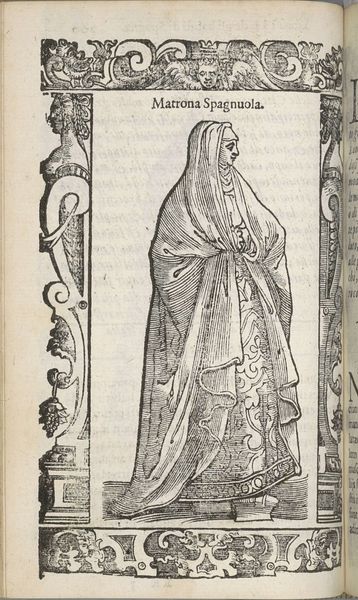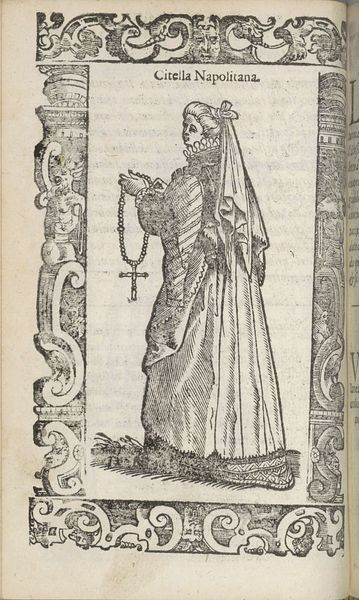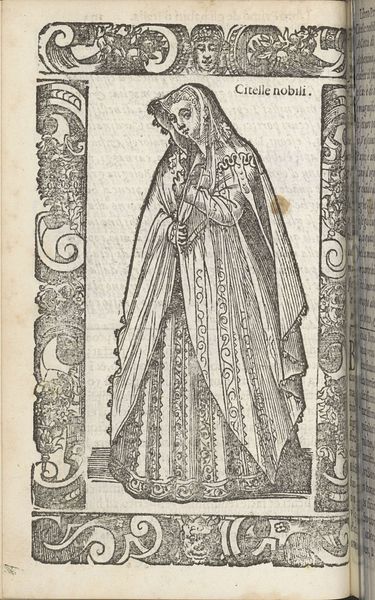
drawing, paper, ink
#
portrait
#
drawing
#
figuration
#
paper
#
11_renaissance
#
ink
#
history-painting
#
italian-renaissance
Dimensions: height 167 mm, width 125 mm
Copyright: Rijks Museum: Open Domain
Curator: Looking at this drawing, I'm immediately struck by its quiet dignity. It's almost as if time itself is holding its breath. Editor: Yes, this drawing titled “Donna Venetiana gia settant'anni”—which translates to "Venetian Woman, Seventy Years Old"—is by Christoph Krieger, created around 1598, and rendered in ink on paper. The material gives a sense of the age of the artwork, itself. Curator: Ink on paper! It's so immediate, so raw. I keep returning to the woman's hands clasped, how vulnerable she looks yet simultaneously serene. Does anyone ever truly own their likeness, rendered in material? It makes you think of all the stories etched on a life lived. Editor: That's the beauty of examining it, isn't it? This type of work circulated primarily within elite intellectual circles, meant as much for scientific documentation or emblem books as art for art’s sake. Paper, particularly, was an imported luxury object. Each of these prints circulated as single-sheet engravings, then collected, collated, and bound, further obscuring their origin in production. It makes us consider what we would use, or wear, every day if we only turned seventy years, as opposed to having those years and moments to collect small mementos along the way. Curator: That idea of collected experience! What do you make of the frame that surrounds her? Those playful skull shapes… Editor: Yes! That’s typical ornament for printing presses, not necessarily unique to the drawing itself, but functional components of book making. Curator: So it’s literally ‘material’ to the process! Amazing how techniques dictate the artwork and vice-versa, the artifice of control in art. I wonder about her story. Was this made as a gift for a patron? Was it made from an impression in life or from description after the fact? Does this capture anything of her essential “Venetianness”? Editor: Perhaps we're asking questions of what a singular person or maker could want, where actually a printer or bookseller might exert more power in the chain. Each time we view these materials, it challenges who is truly “making” art. Curator: Food for thought indeed. This has made me rethink the very hands that made and presented the material—not just in the drawing, but in its display! Editor: A pleasure, as always, to reflect on these details.
Comments
No comments
Be the first to comment and join the conversation on the ultimate creative platform.
